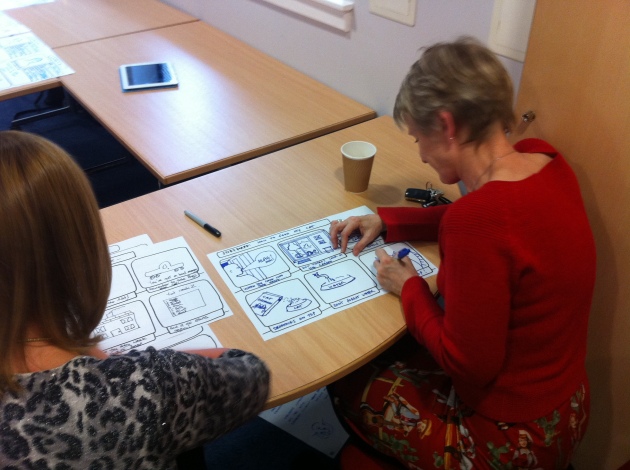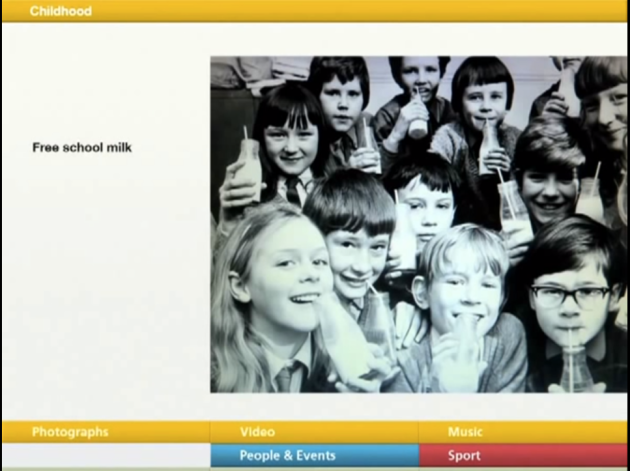Interview number three on the dissertation research mission was with Phil and Genevieve McMahon. The brains behind Foreign bear studio, an up and coming spatial design company based in London’s Hackney. This interview was about finding out more about creative start-ups and what it takes to get one going. Here’s what we talked about:
How did you decide to start Foreign bear studio?
It was after moving into our first flat, that was our first opportunity for design. It gave us the freedom to do exactly what we wanted. That sparked something that we wanted to do. We had gotten good feedback as well. It was a very organic decision that developed on its own. It took a while
What did it take to get it off the ground?
A lot of boring formal work, we worked with company’s house to get things going. There was a lot to be done with accounts and other behind the scenes stuff. You have to learn as you go. Phil did a business course so he learned bits and bobs doing that but you just have to jump in at the deep end.
The team we worked with was a big thing, understanding what they expected from us and what we needed from them. We spent a lot of time figuring out who we could work with to get the finish we wanted. Our expectations of the finished product are a bit higher than what would normally be asked of. We had to figure things out like the schedule of work, when to order certain materials to be installed so that the workmen weren’t waiting about with nothing to do. Things have to be put in in a particular order and it really important to get it all done on time so people are always busy. We learned we had to make decisions quickly as well.
There are new problems which arise with every project, you can think that you’re on track and then something comes along which you weren’t expecting so you are constantly having to adapt.
What are the benefits of living in London?
Great access to what is contemporary in design. There are constant trade shows, showrooms, antique shops, and exhibitions which are all easily accessible. The city is immersed in design, it’s the whole international scene, but right on your doorstep. There is a lot you feed into and take influence from. You can take part in things too, exhibiting and so on. London has a unique energy.
What are the disadvantages? (I got two simultaneous answers for this one: ‘competition’ ’expensive’)
There are so many people coming to London to make it. It’s hard to get noticed and to keep your head above water. It’s not enough to just get noticed once you have to keep coming back with more work, getting more people to take note of what you are doing. We did talk about moving but we would have to give it up.
The expense is an issue too, everything in London costs more, but then you are able to charge more as well.
Do you have an accountant, solicitor, or PR manager whom you work with?
We work with an architect and a solicitor; we use them for each project. The council plays a big part, getting planning permission, and there are conservation areas to contend with too. Any structural work done in a building has to be inspected by a building control officer to make sure it’s all up to code.
What kind of relationship do you have with the people you work with?
It’s important to keep it professional and to have boundaries. Having good relationships is really important for a business. It took us a while to get together a trustworthy team who we knew would give us the results we wanted.
We found that it was important to make daily site visits to make sure everything was going in, as we wanted. If you are around a lot you can catch mistakes almost before they happen. You might find a joist that’s a centimeter off and it’s vital you move it early on to avoid having to rip things out later.
How do you gauge pricing?
It’s very difficult to do pricing, and it differs depending on the job. We have friend who work in the industry so we can draw up proposals and they check the pricing for us, and then we do the same for them. If we were doing a consulting job it would be priced by the hour, whereas if you were to be doing a lot of drawing you would do it per sketch. A budget for a house is different again; we actually have a detailed spreadsheet made up. It took us a while to collate enough data from our projects. Once the information had built up you could use it to make a rough estimate of what a kitchen or a bathroom would cost and use that as a starting point. You are always going to be a bit off with budget that comes with the territory.
It is different again if we are working for a client, we then have to factor in our time. That is probably something we should be doing for every project but it hasn’t happened yet.
What about dry spells?
You are trying all the time to get the next bit of work. We just finished up a project on Friday we are now trying to get a plot in London. We have put a packet of drawing and proposals together for the council. You are always thinking about what’s next, even when you are working on something. There will sometimes be a lapse in between but you can use that to catch up on other things. Coming up to the end of a project you don’t have time to think. You are constantly on the go and getting things done so other things start to mount up. There are letters to send and bills to pay, other boring stuff like that that you fall behind on.
Do you have a specific schedule that you work to?
Phil does the paperwork but that can be difficult when you are on site all the time. There are outgoings and in-comings as well as various applications for the council; you have to insure you have these things. It can sometimes be a struggle to keep on top of it. Things can happen, problems arise, which pull you out of the office. It would make sense to take care of the paper work on say a Wednesday but it doesn’t always work out.
Do you make mood boards?
Yes, it’s good to have everything to do with a project in one place. It sinks into your subconscious. We had a picture with a staircase in it up on the wall ages ago and it resurfaced recently and I realised how similar it looked to a recent project we did. The staircase had been inspired by this forgotten image. As a designer it’s really important to be surrounded with visuals.
Do you have a set group of people you always work with?
We mentioned the build team earlier but aside from that we tend to always use the same suppliers for each project. Every job brings something new though, for this one we designed a bespoke marble sink so we needed a new supplier for that. We don’t usually ever meet our suppliers in person but get to know them quite well from long conversations on the phone and via email. We are quite independent of everyone and just touch in and out of people’s worlds. Our suppliers live all across England. The sense of completion at the end of a project doesn’t spread out to everyone.
I think the main points to take away from this interview were the importance of selecting the right people to work with, who you know will produce the quality of work that you want, getting everything done in the right order, and getting supplies ordered on time, also the importance of adaptability, being able to evolve and change how you work to cater for new and unexpected problems which may occur. Another thing, which I think is vital, is surrounding yourself with inspiration, be it mood boards or local museums, most of what an artist or designer produces is heavily influenced by the world around them.
It was really interesting to see the inside of the foreign bear studio, after having seen photos of it. The studio and their work have been featured in quite a few magazines and are really making a name for themselves.























